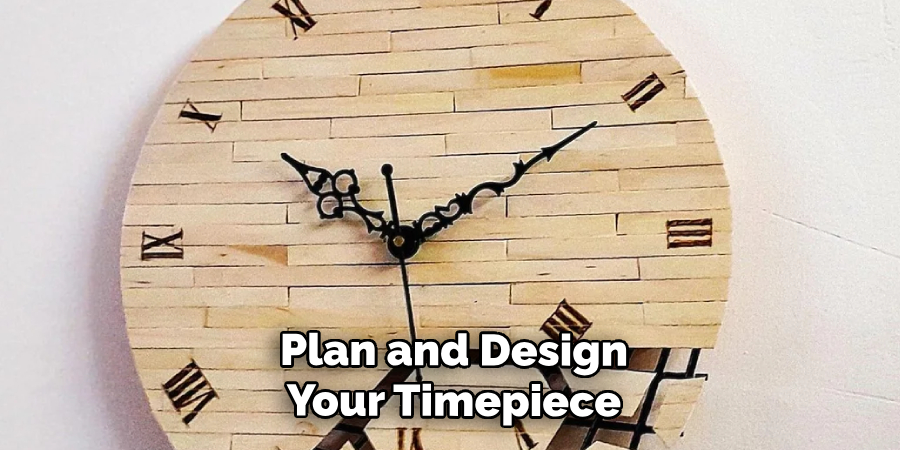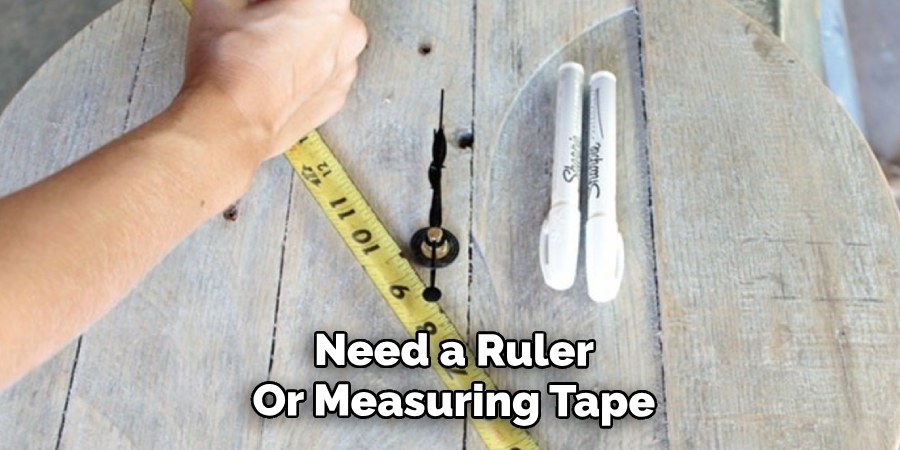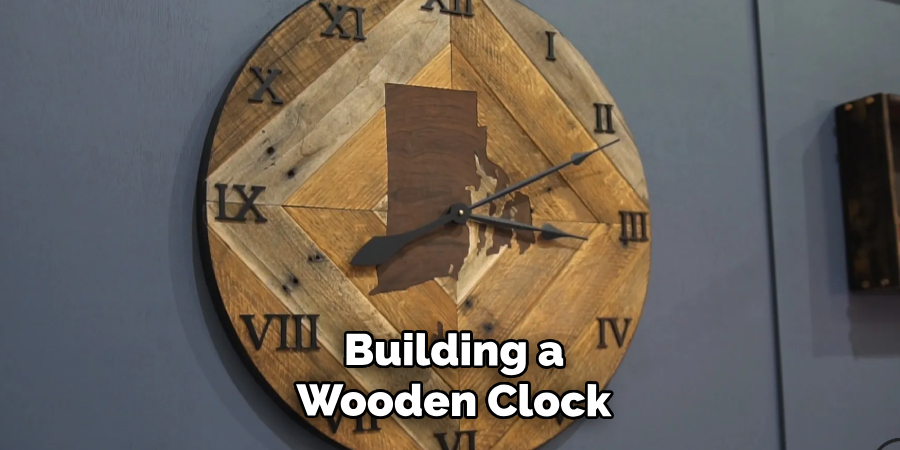Creating wooden clocks is a rewarding and creative craft that combines woodworking skills with functional design. Whether you’re a seasoned woodworker or a beginner looking for a new project, making a wooden clock allows you to bring together precision, artistry, and practicality.
This guide on how to make Wooden Clocks will walk you through the essential tools, materials, and step-by-step instructions needed to craft a unique and personalized timepiece for your home or as a thoughtful gift.

Why Choose Wood for Clock Making?
Wood is a timeless and versatile material that has been used for centuries in crafting furniture, tools, and decorative objects. When it comes to making clocks, wood offers several advantages over other materials such as metal or plastic:
Aesthetics:
Wood has a natural beauty and warmth that adds character and charm to any space. You can choose from a variety of woods with different grains, colors, and textures to create a unique look for your clock.
Customization:
Wood can be easily cut, shaped, and engraved to match your specific design preferences. This makes it an ideal material for creating personalized and one-of-a-kind clocks.
Durability:
With proper care and maintenance, wooden clocks can last for generations. Wood is a sturdy and long-lasting material that can withstand the test of time.
Essential Tools for Wooden Clock Making
Before starting your clock making project, it’s important to have the right tools on hand. While some tools may vary depending on the type of clock you’re making, here are some essential tools you will need
- A Saw (Table or Handheld) for Cutting Wood Pieces
- A Drill With Various Drill Bits for Making Holes
- Sandpaper in Various Grits for Smoothing and Finishing Surfaces
- Wood Glue for Attaching Pieces Together
- Clamps to Hold Pieces in Place While the Glue Dries
- A Chisel and Carving Tools for Intricate Details or Designs
- A Ruler, Measuring Tape, and a Protractor for Precise Measurements

Materials Needed
Apart from tools, you will also need some materials to complete your wooden clock. Some of the common materials needed include:
- Different Types of Wood (Hardwood Recommended) Such as Oak, Maple, Cherry, or Walnut Depending on Your Design Preference
- Clock Movement Mechanism With Hands and Battery
- Decorative Elements Like Numbers or Symbols for Marking Time
- Wood Stain or Paint for Coloring and Finishing the Clock
8 Simple Step-by-step Guidelines on How to Make Wooden Clocks
Step 1: Plan and Design Your Clock
The first step in making a wooden clock is to plan and design your timepiece. Begin by deciding on the type of clock you want to create—this could be a wall clock, desk clock, or even a mantel clock.
Sketch out your design, including the shape, size, and style of the clock. Consider details such as the type of wood you’ll use, the placement of the clock movement, and any decorative elements like numbers, symbols, or carvings.
Planning your design carefully will help ensure that you have a clear vision of the final product and make the construction process easier. Don’t forget to take precise measurements to ensure accuracy and functionality.
Step 2: Prepare the Wood Pieces
Once you have a design in mind, it’s time to prepare the wood pieces for your clock. Begin by selecting the appropriate type of wood and cutting it into the desired shapes and sizes according to your plan. Use a saw or carving tools to create any intricate details or designs on the wood pieces. Sand all surfaces of the wood until they are smooth.
The number of wood pieces needed will vary depending on your clock design, but typically you will need a base piece for the clock face, a backboard for support, and additional pieces for any decorative elements or details.
Step 3: Create Holes for Clock Movement Mechanism
To install the clock movement mechanism, you will need to carefully drill a hole in the center of the clock face. Begin by locating the exact center of your clock base using a ruler or measuring tape, and mark the spot with a pencil. This ensures that the clock movement is aligned properly for accurate timekeeping.

Next, use a drill with an appropriately sized drill bit to create a hole that matches the diameter recommended by the clock movement manufacturer. It’s important to make the hole clean and precise to ensure a secure fit for the mechanism.
If your design includes additional holes for decorative details, such as attaching numbers or adding ornamental elements, mark and drill those as well during this step. Once the drilling is complete, sand the edges of the holes to remove any roughness or splinters for a polished finish.
Step 4: Assemble the Clock Movement Mechanism
Following the instructions provided by your clock movement manufacturer, assemble the mechanism and insert it into the hole you drilled in your clock base. Make sure it is centered and securely attached.
Next, attach the hands of the clock to the front of the mechanism according to their designated sizes. Test that the hands move smoothly and accurately around the clock face before proceeding with further constructions.
Step 5: Glue Wood Pieces Together
With the clock mechanism secured, it’s time to assemble the wooden components of your clock. Start by arranging the wood pieces according to your design, ensuring everything is aligned properly. Apply wood glue to the edges or areas where the pieces will be joined. Use a brush or applicator to spread the glue evenly for a strong bond.
Once the glue is applied, press the wood pieces together firmly and use clamps to hold them in place while the glue dries. Be sure to wipe away any excess glue with a damp cloth before it hardens to maintain a clean appearance.
Allow the glue to dry completely according to the manufacturer’s instructions to ensure the clock frame is secure and durable. Proper gluing is essential to achieving a sturdy, professional finish for your wooden clock.
Step 6: Add Decorative Elements
Once the clock mechanism and wooden components are securely in place, you can personalize your clock by adding decorative elements. Begin by attaching numbers, symbols, or markers to the clock face to indicate the hours.
You can use adhesive-backed numbers or paint them directly onto the wood for a more customized look. If your design includes carvings, patterns, or other artistic details, now is the time to complete those embellishments using carving tools, wood burners, or stencils.
For an added touch, consider applying decorative inlays, metal accents, or etched designs to make your clock truly unique. You might also wish to incorporate additional materials like glass or metal for a mixed-media effect.
Once you’ve added your decorative details, ensure everything is securely attached and evenly aligned. Adding these elements not only enhances the visual appeal of your clock but also brings your creative vision to life. Be careful to avoid obstructing the movement of the clock hands with your decorations.

Step 7: Stain or Paint Your Clock
Now that your clock is fully assembled and decorated, it’s time to apply a finish to protect the wood and enhance its appearance. Begin by deciding whether to stain or paint your clock, depending on the look you want to achieve.
If you choose to stain the wood, select a stain color that complements the natural grain and tone of the wood. Use a clean brush or cloth to apply the stain evenly across the surface, following the direction of the wood grain. Allow the stain to penetrate the wood for the recommended time before wiping away any excess with a clean cloth.
If you prefer to paint your clock, select a high-quality wood paint and apply it using a brush or roller in even strokes. You can use multiple colors to create a custom design or pattern if desired. Be sure to allow the paint to dry thoroughly between coats for a smooth and durable finish.
Step 8: Attach Clock Hands
After the finish has dried completely, it’s time to attach the clock hands. Carefully insert the hour and minute hands onto the clock mechanism according to their designated sizes.
Ensure they are centered and appropriately aligned with any markings or numbers on the clock face. Once you’ve installed the hands, test that they move smoothly around the clock face without obstruction. If all is well, your wooden clock is ready for display and use!
Following these steps on how to make Wooden Clocks for creating a wooden clock will not only result in a beautiful and functional timepiece but also provide a satisfying DIY experience.
With your own unique design and personal touch, you can create a handcrafted piece that adds character to any room in your home or makes for a thoughtful gift for someone special. Get creative and have fun with this project while honing your woodworking skills! Happy crafting!

Frequently Asked Questions
Q1: What Tools Do I Need to Make a Wooden Clock?
A1: You will need a ruler or measuring tape, drill with appropriate bits, sandpaper, wood glue, clamps, clock movement mechanism, clock hands, wood pieces, carving tools or stencils (optional), stain or paint (optional), and any decorative elements you wish to add.
Q2: How Do I Choose a Design for My Wooden Clock?
A2: You can find design inspiration online or come up with your own unique concept. Consider the style of the room where the clock will be displayed and choose a design that complements it. Also, keep in mind the level of difficulty based on your woodworking skills when selecting a design.
Q3: Can I Use Different Types of Wood for My Clock?
A3: Yes, you can use different types of wood for your clock depending on your personal preference. However, make sure the wood is suitable for crafting and has a smooth surface for easy gluing and finishing.

Conclusion
In conclusion, building a wooden clock is an enjoyable and rewarding project that allows you to showcase your creativity and craftsmanship. By following the steps outlined in this guide on how to make Wooden Clocks, you can create a unique and functional timepiece that adds personality to your living space.
With precision and attention to detail, you can ensure a sturdy and accurate clock that will be admired for years to come. So go ahead and put your woodworking skills to the test by making your own wooden clock today! So get started on this DIY project today, and show off your handmade masterpiece proudly!

